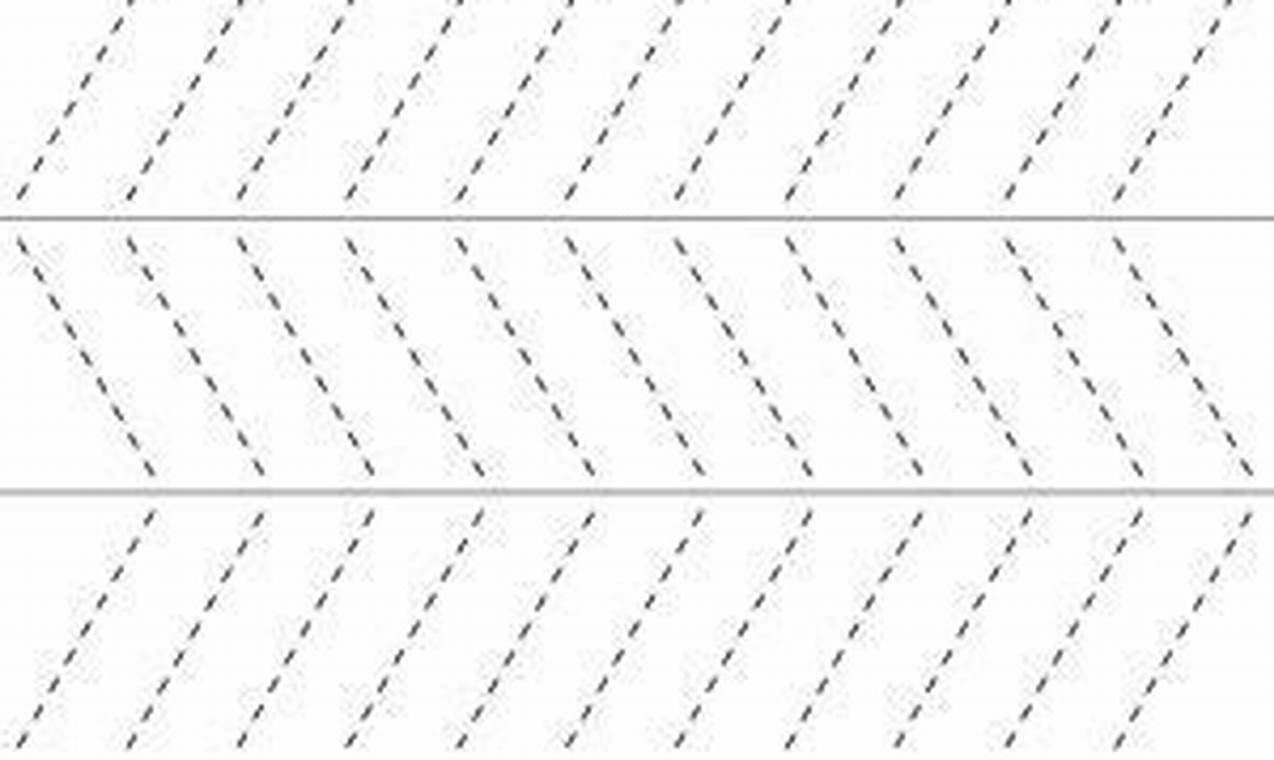Developing strong fine motor skills is a crucial early step for young learners. These skills lay the foundation for essential tasks such as writing, drawing, and manipulating small objects. Activities that encourage precision and control, such as tracing, play a vital role in preparing children for academic success and everyday activities. This worksheet focuses specifically on diagonal line tracing for fine motor skills, a key component in building these essential capabilities.
The primary benefit of engaging with a diagonal line tracing for fine motor skills worksheet is the enhancement of hand-eye coordination. Children learn to visually track a line and translate that visual information into precise hand movements. This activity also improves pencil grip, strengthens hand muscles, and develops the ability to control the direction and pressure of writing instruments. Consistent practice fosters improved handwriting readiness and confidence in completing fine motor tasks.
This particular worksheet is structured to provide a clear and progressive learning experience. It contains a series of diagonal line tracing for fine motor skills exercises, starting with wider, more easily manageable lines and gradually progressing to thinner, more challenging ones. The lines are presented at varying angles to further challenge coordination and spatial awareness. Each line provides ample space for repeated tracing, allowing children to refine their movements and develop a sense of mastery. The worksheet also incorporates visually appealing elements to maintain engagement and make the learning process enjoyable.
To use this diagonal line tracing for fine motor skills worksheet effectively, begin by providing the child with a comfortable and well-lit workspace. Offer a thick pencil or crayon that is easy to grip. Encourage the child to start each line at the designated starting point and to trace slowly and carefully along the dotted lines. If the child struggles, offer gentle guidance by demonstrating the movement and encouraging them to take breaks as needed. Praise their effort and focus on progress rather than perfection. Consider laminating the worksheet for repeated use with dry-erase markers.
To further develop fine motor skills beyond this diagonal line tracing for fine motor skills worksheet, explore related resources. Kidtraces.com offers a variety of tracing worksheets focusing on different lines, shapes, and letters. Incorporate hands-on activities such as playing with building blocks, using play dough, or stringing beads. These activities complement tracing exercises by strengthening hand muscles and improving dexterity. Reading aloud together and encouraging drawing also foster creativity and further refine fine motor control.
In conclusion, the diagonal line tracing for fine motor skills worksheet is a valuable tool for developing essential pre-writing skills. Its structured format and engaging design make it an effective and enjoyable learning activity for young children. Download the worksheet today and witness the improvement in your child’s fine motor control and handwriting readiness. Remember to explore other free worksheets on Kidtraces.com for continued support in early learning and skill development.
